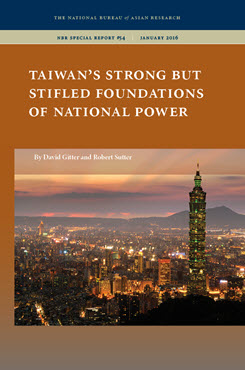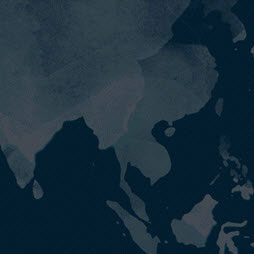NBR Special Report no. 54
Taiwan's Strong but Stifled Foundations of National Power
This report examines the key factors underpinning the size, nature, and resilience of national power in Taiwan and draws implications for cross-strait relations.
EXECUTIVE SUMMARY
MAIN ARGUMENT
China’s ever-growing influence poses a threat to Taiwan’s economy, national defense, and international position. Although Taiwan’s prosperity depends heavily on trade with and investment from China, the island is under constant threat from more advanced Chinese military forces. It relies on the United States to counter China’s buildup and deter a military attack or coercive pressure. In addition, Taiwan’s vibrant economy, improving military capacity, and effective diplomacy toward China, the United States, and others have helped the island advance its influence and secure critical needs. Its biggest weakness in dealing with the massive constraints from China is the partisan divide between the two major political parties: the Kuomintang (KMT) and Democratic Progressive Party (DPP). This divide is deeply rooted, having endured now for almost 30 years, and has undermined the government’s ability to set and implement effective policies to deal with Taiwan’s precarious situation.
POLICY IMPLICATIONS
- President Ma Ying-jeou’s accommodation of China, with support from China and the United States, has enabled closer cross-strait relations. However, this trend has stalled recently, and there are several scenarios under which relations may change for the worse.
- A DPP victory in the January 2016 elections foreshadowing a major challenge to the ‘one China’ principle undergirding existing cross-strait ties
- Chinese president Xi Jinping increasing pressure on Taipei to begin political talks on reunification
- The election of a U.S. president more willing than President Obama to use U.S. power, including ties with Taiwan, to counter perceived Chinese advances at the U.S.’s expense in Asian and world affairs
- The first two scenarios may require U.S. actions to calm cross-strait tensions, while the third scenario assumes U.S. readiness for rising tensions with China.



